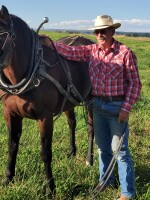The USDA recently announced that about 9 million acres of land have been accepted under the grasslands Conservation Reserve program option since 2021. States with the largest amount of land accepted under the grasslands option this year include Nebraska, with almost 238,000 acres; Colorado, with over 218,00 acres; and New Mexico, with about 186,000 acres. The program permits producers to graze, harvest hay, and produce grass seed on their land, while receiving an annual rental payment for maintaining the existing permanent cover on the land for a period of time from 10 to 15 years. Participants can graze, harvest hay, and produce grass seed, while receiving about $13 as long as they maintain the existing permanent cover
Last week, the U.S. Department of Agriculture authorized the first field safety trial of a vaccine for bird flu in dairy cattle. Secretary of Agriculture Tom Vilsack announced that the field trial is “a significant step forward” in the development of a vaccine. According to Vilsack, a number of companies have been working on a vaccine, and the USDA approved the trial after one firm “presented sufficient information” to be cleared to advance the development. Industry experts point out that progress on an animal vaccine against H5N1 avian influenza could help prevent both animal-to-human transmission and the loss of more livestock. So far, thirteen people have tested positive for bird flu since April, while the virus wreaked havoc on poultry flocks and infected dozens of dairy herds.
Oxtail is the culinary name for the tail of cattle, and for a long time in the U.S. has been regarded as undesirable for human food, although in Europe, oxtail soup has been a common dish since the Middle Ages, and is popular for its hearty flavor and supposed medicinal properties. In African and Caribbean cuisines, oxtail stews and braises are considered comfort foods. But recently, Restaurants across the U.S. are adding this cut of beef to their menus, with patrons lining up to get a taste of the beef cut on pizza slices, in cheese steak subs, pasta dishes, and stuffed into patties. This rising popularity has driven up the price of oxtail, with the average wholesale price for oxtail reaching $14 per pound in July. Is this because cattle have only one tail?
According to a USDA report last week, U.S. agricultural trade deficit is likely to hit a record high of $42.5 billion next year, and economists are predicting that low commodity prices will continue to depress profit opportunities for farmers. The trade deficit in fiscal year 2025 is expected to to grow roughly 40% over this fiscal year’s projected $30.5 billion shortfall. Exports to nearly all major trading partners are expected to remain flat or decline with the exception of horticulture. According to the USDA, increasing competition with Brazil, lower crop prices and tight beef supplies are driving the decline in U.S. export values, while agricultural imports have grown because of rising demand for sugar, horticulture and tropical products. In 2025, U.S. exports are forecast at $169.5 billion, while imports are expected to hit a record $212 billion, up nearly 4% from 2024. According to the August Ag Economists’ Monthly Monitor, more economists are concerned U.S. agriculture is already in a recession or on the brink of one, but economists point out if it weren't for strong cattle prices, the ag economic picture would look even worse.
Robert Frost wrote, “there are two kinds of teachers: the kind that fills you with so much quail shot that you can’t move, and the kind that just gives you a little prod behind and you jump to the skies.



